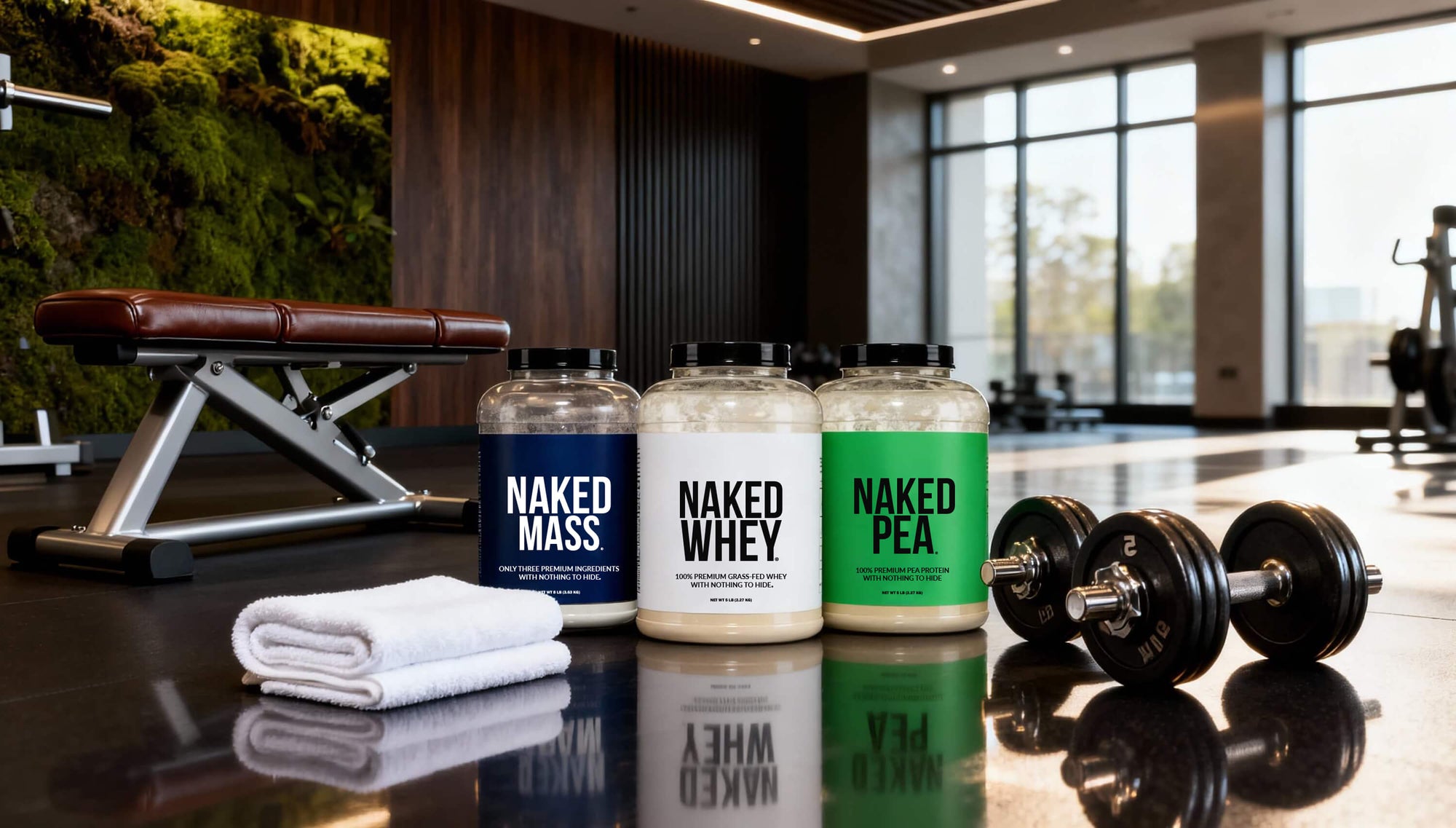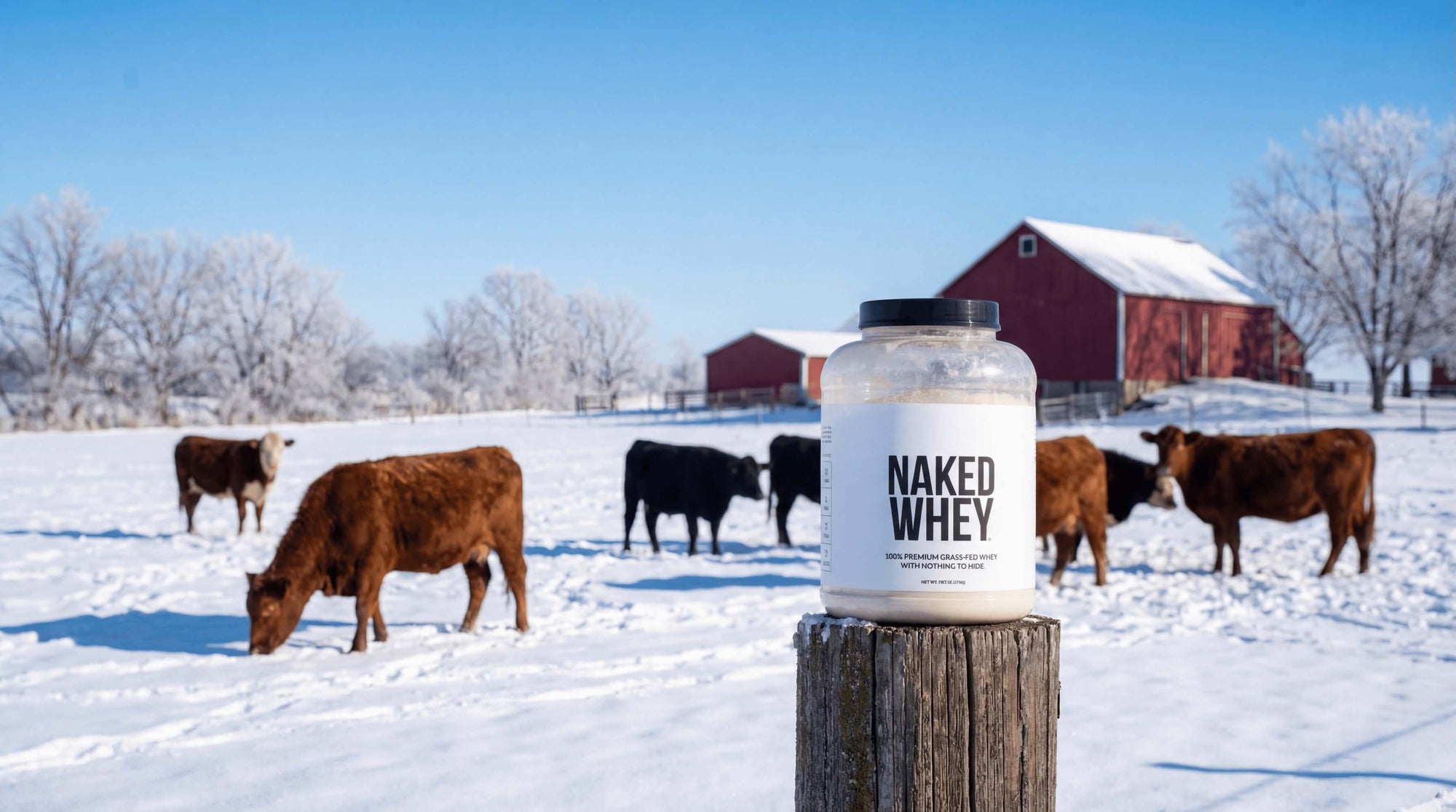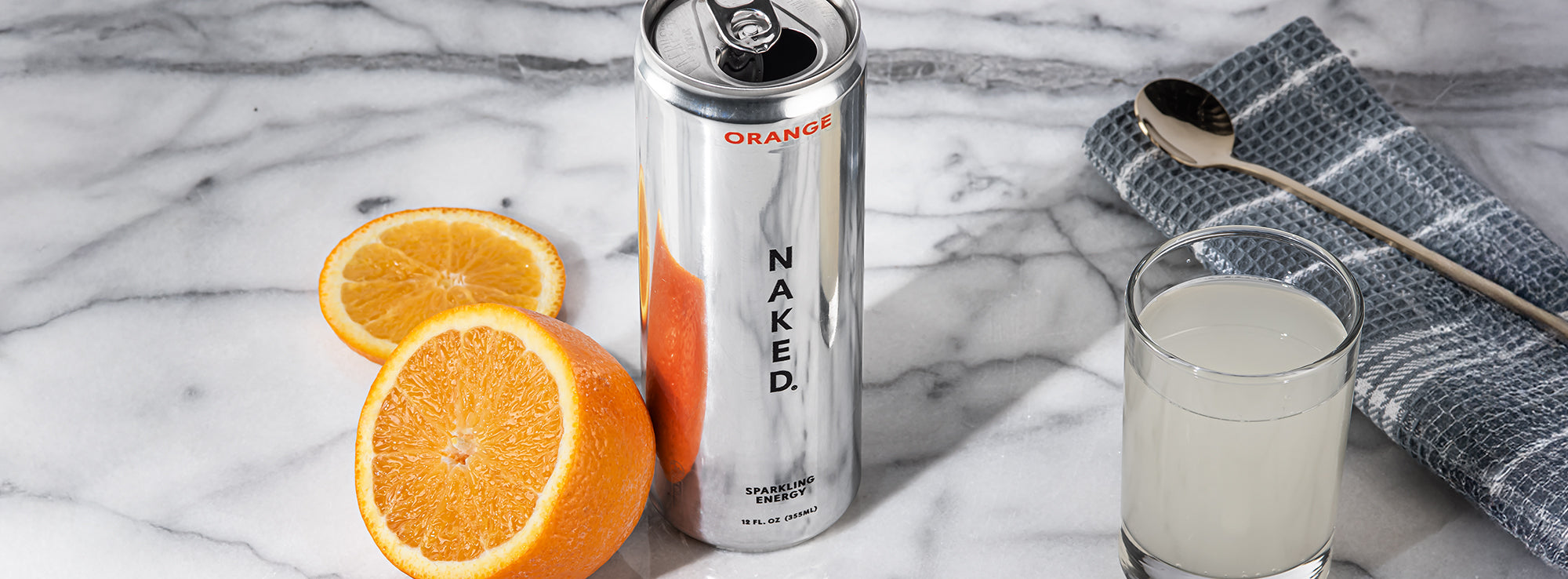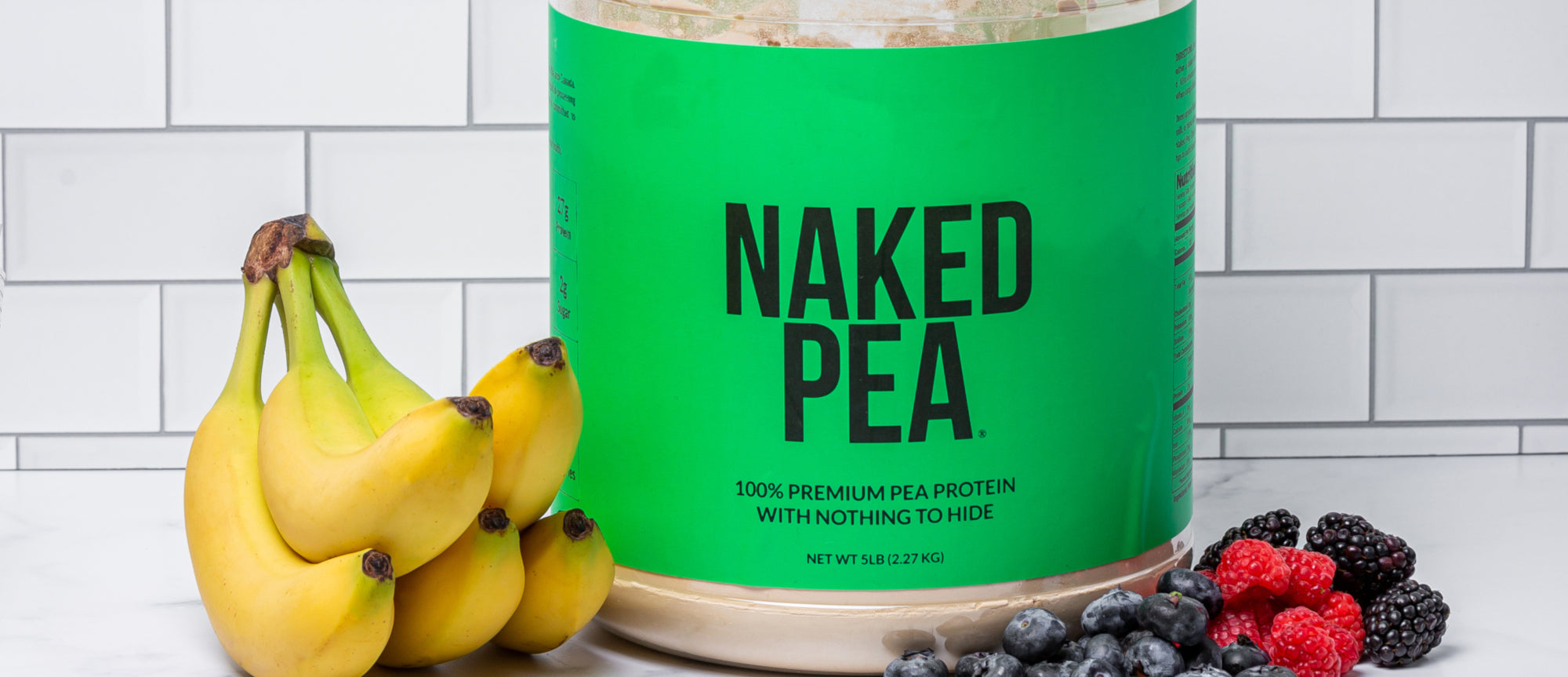The posterior chain is your body’s powerhouse. It’s where real strength comes from – not big arms, a sculpted chest or carved abs, but what’s behind you.
It’s responsible for some of your most important daily movements: standing tall, picking up heavy things, sprinting after your kids, or just walking with good posture.
If your posterior chain is weak or neglected, you’re more likely to experience lower back pain, tight hips, and even injuries when you run or play sports. On the other hand, building strength and resilience here can improve your athletic performance, reduce aches from long hours of sitting, and make everyday life feel easier.
In this article we’ll show you why the posterior chain matters, and exactly how to train it effectively (and build more functional strength and power).
What is the Posterior Chain?

The posterior chain is the collection of muscles that runs along the entire back side of your body. It starts at your calves, runs up through your hamstrings and glutes, and continues through the spinal muscles along your back, all the way to the lower traps between your shoulder blades.
These muscles work as one connected system, often referred to as a “kinetic chain.” Their main job is to extend your hips, stabilize your spine, and keep you upright.
The posterior chain is heavily involved in walking, running, jumping, picking up objects, and even maintaining proper posture when you sit or stand. Essentially, whenever you hinge, bend, sprint, or lift, your posterior chain is doing the heavy lifting behind the scenes.
Because these muscles work together, weakness or tightness in one area often affects the others. For example, weak glutes can lead to overworked lower-back muscles, which is a common reason people experience back pain.
Training your posterior chain as a whole helps ensure balance, strength, and resilience throughout your entire body.
Why Having a Strong Posterior Chain Matters
Your posterior chain is more than just a group of muscles. It’s the foundation of how you move.
Whether you’re an athlete sprinting down a field or someone lifting a heavy box at work, these muscles are what power you forward and keep your spine safe.
A strong posterior chain improves posture, which is crucial if you spend much of your day sitting. When these muscles are strong, they counter the forward pull created by long hours at a desk, reducing the risk of rounded shoulders and lower-back discomfort.
From a performance standpoint, stronger glutes, hamstrings, and spinal muscles mean more explosive power for running, jumping, and lifting.
In fact, research on hamstring and hip training consistently shows reduced risk of hamstring strains and better sprint performance when these muscles are trained properly. Simply put, building your back-side strength makes you faster, more stable, and less likely to get hurt.
And even if you’re not chasing athletic goals, strengthening the posterior chain can make everyday life easier. Think carrying groceries, getting up from the floor, or playing with your kids. A stronger posterior chain means less strain on your knees and back.
Posterior Chain Development Principles

Training your posterior chain isn’t about doing random exercises here and there. It’s about following some simple but effective principles that build strength, power, and durability over time.
Here are four things to focus on for a stronger posterior chain.
Hip hinge movements
Hip hinge exercises teach you to bend at the hips while keeping your spine neutral, which is key for targeting the glutes and hamstrings effectively.
Great examples are exercises like deadlifts, hip thrusts, and back extensions. They all hinge at the hips rather than bending at the lower back.
Progressive overload
Progressive overload is key to improving strength in the posterior chain. Your muscles need to be challenged to grow stronger, so gradually increase the weight, reps, or sets over time.
Start with a weight you can control and build up as your form and strength improve. If you’re struggling to increase weight or reps, try these alternative ways to achieve progressive overload.
Eccentric training
Eccentric work – where you emphasize the lowering phase of an exercise – has been shown to reduce hamstring injuries and improve flexibility. Movements like Nordic hamstring curls or slider leg curls are great examples.
Explosive power work
Finally, balance heavy lifting with explosive power work like kettlebell swings.
These help you generate force quickly, which transfers to real-life activities like sprinting or jumping, while keeping your training well-rounded.
Three Core Posterior Chain Strength Moves

One of the best parts about training the posterior chain is the simplicity. You don’t need a lot of complicated isolation exercises to get stronger in this area – just a few simple, compound lifts.
Here are three core exercises to include in your routine.
Romanian Deadlift (RDL)
The RDL is one of the best moves to teach proper hip hinging while building strong hamstrings and glutes.
How to do it:
-
Hold a barbell or dumbbells in front of your thighs, keep a slight bend in your knees.
-
Push your hips back as you lower the weight, feeling a stretch in your hamstrings.
-
Stop when your back starts to round, then drive your hips forward to stand tall.
Start light and focus on form. It’s more about control than heavy weight at first.
Barbell or Dumbbell Hip Thrust
The hip thrust directly targets the glutes, a core part of the posterior chain.
How to do it:
-
Sit with your upper back against a bench, roll a barbell or hold a dumbbell across your hips.
-
Drive through your heels to lift your hips until your body is in a straight line from shoulders to knees.
-
Pause at the top for a strong glute squeeze, then lower with control.
If barbell setup feels awkward, start with just bodyweight or a single dumbbell.
Back Extension (45° Bench or Stability Ball)
The back extension strengthens your spinal muscles while reinforcing proper glute activation.
How to do it:
-
Start with your hips resting on a 45-degree bench pad or stability ball.
-
Slowly lower your torso toward the ground, then raise until your body is straight.
Focus on moving from your hips rather than your lower back. You can add a weight plate or light dumbbell once bodyweight reps become easy.
Supporting Posterior Chain Movements

If you want to put an even greater focus on strengthening the posterior chain, here are some more exercises you can add into your routine:
-
Nordic Hamstring Curl: Strengthens the hamstrings in their lengthened position, which is crucial for sprinting and preventing hamstring strains. This exercise has been specifically shown to significantly reduce the rate of hamstring injuries in athletes.
-
Slider Leg Curl: A bodyweight-friendly move that hits the hamstrings and glutes while also engaging the core. It mimics how the hamstrings work during running and cutting, making it great for overall posterior chain durability.
-
Kettlebell Swing: An explosive hip-hinge movement that develops power through the glutes and hamstrings while teaching proper hip extension mechanics. Ideal for adding athletic, fast-twitch power to your training.
-
Single-Leg Glute Bridge: Builds unilateral glute strength and hip stability, important for running, jumping, and reducing lower-back stress.
-
Reverse Hyperextension: Targets the glutes, hamstrings, and lower back with minimal spinal compression, making it great for building strength and recovery-friendly posterior chain work.
-
Good Morning: Strengthens hamstrings, glutes, and spinal erectors through a deep hinge position, reinforcing strong posture and hip mobility under load.
-
Step-Up (Weighted or Bodyweight): Works the glutes and hamstrings one leg at a time, improving balance and coordination while reinforcing hip extension strength in a functional, upright position.
-
Glute Ham Raise (GHR): Combines knee flexion and hip extension strength, training the hamstrings and glutes in synergy.
Try these exercises alongside the foundational movements mentioned earlier (focusing on exercises that develop areas where you need more development).
Posterior Chain Mobility and Recovery Basics
Building strength in the posterior chain is only half the story. You also need to keep your hips, spine, and hamstrings moving well.
A few minutes of mobility and recovery work after your workouts will make a big difference in how you feel and how quickly you bounce back.
Here’s a simple posterior chain mobility routine to add into the mix:
-
Start with hip-flexor stretches to counteract tightness from sitting. Place one knee on the ground, with your other foot in front like you’re in a half-kneel. Gently shift your hips forward until you feel a stretch at the front of your hip, holding for 20–30 seconds per side.
-
Follow with cat-camel spine mobility. On hands and knees, slowly round your back toward the ceiling (cat), then gently drop your belly and lift your head (camel). This keeps your spine mobile and helps prevent stiffness.
-
Finish with a quick foam roll for the hamstrings, glutes, and lower back. Spend 30–60 seconds per muscle group to reduce soreness and improve blood flow.
And don’t forget the basics of recovery: quality sleep, enough protein to support muscle repair, and light activities like walking or cycling on rest days to keep blood moving through sore muscles.
These small habits compound over time to make your training more effective and reduce risk of injury.
Sample Posterior Chain Routine

This simple three-day routine is designed for everyday gymgoers who want a stronger, more resilient back side. Each session focuses on one or two main lifts, supported by accessory movements and mobility work.
Monday: Strength Focus
-
Romanian Deadlift: 4 sets of 6 reps
-
Nordic Hamstring Curl (or Slider Leg Curl): 3 sets of 5 reps
-
Hip Flexor Stretch: 30 seconds per side
Wednesday: Glute Emphasis
-
Hip Thrust (barbell or dumbbell): 4 sets of 8 reps
-
Single-Leg Glute Bridge: 3 sets of 10 reps per leg
-
Cat-Camel Spine Mobility: 8 slow reps each direction
-
Foam Roll: Hamstrings and glutes, 30–60 seconds each
Saturday:Power & Resilience
-
Kettlebell Swing: 5 sets of 15 reps
-
Back Extension: 3 sets of 12 reps
-
20-minute walk or light cycling for active recovery
Keep one or two reps “in the tank” on every set. Focus on crisp form rather than maxing out.
As you get stronger, gradually increase the weights or reps to keep progressing without sacrificing technique.
Final Thoughts
Your posterior chain is your body’s engine room. It’s what helps you stand tall, move powerfully, and stay pain-free whether you’re playing sports, working out, or just living life. Yet many people neglect it.
The good news is that you don’t need complicated programs or endless hours in the gym to build a strong posterior chain. Just a handful of focused exercises can transform how your body feels and performs.
Pair this strength work with a few minutes of mobility and recovery habits, and you’ll be building not just muscle, but resilience. Over time, your back, hips, and legs will handle life’s physical challenges with ease, from heavy lifts in the gym to simple everyday tasks.





